The 2016-17 regular season is officially a distant memory. The Stanley Cup Playoffs are in full swing, and for many hockey fans, this is the most exciting time of the year. It’s also quite stressful, and at times flat-out maddening. But at the end of the day, there is no substitute for the thrill of watching your favorite players compete for the greatest trophy in the world.
That’s if your favorite team made it to hockey’s grand tournament, of course.
For fans of the 14 teams who didn’t, this time of year can be more deflating than anything else. Nearly every hockey-related article you read over the next two months will be in some way connected to the quest for the Stanley Cup. For those left out in the cold, that can be disheartening.

So I had an idea. Why not try to give those fans something to look forward to for next season?
I’ve taken a look at the 14 NHL teams who missed the postseason, many of which have multiple bright spots to hang their hats on as they try to improve for the 2017-18 season. As a result, I’ve tried to put together a list of optimistic predictions for next year.
Before we begin, I must first set forth a few disclaimers. First and foremost, I realize that there will be a multitude of changes throughout the world of hockey in the off-season. Free agency, trades, coaching changes and both drafts will all make their respective impacts, and some of my predictions may change as a result. I will revisit them in October and make amendments where necessary.
Second, some of these predictions may be shocking to read, but I have not laid them out for the sake of shock value alone. I genuinely believe in the possibility of each one coming to fruition. That said, take them with a grain of salt. There is at least one reason each of these teams missed the playoffs, and in most cases it’s because they weren’t very good. Those weaknesses are not going to disappear overnight, and for a handful of these teams, next season will still be very much an uphill battle.
But the purpose of this article is to instill some hope in the fan bases of the teams in question, so I’ve done my best to keep these analyses on the positive side. I’m not here to kick you while you’re down.
This will be a two-part writing, with our first edition focusing on the Eastern Conference. With that, let’s get to it.
Atlantic Division
Steven Stamkos will play a full season for the Tampa Bay Lightning.
The Lightning, who finished with two more wins than the Toronto Maple Leafs, did not deserve to miss the playoffs. Had Stamkos not missed a staggering 65 games due to injury, they would not have. In any case, the Lightning captain hasn’t played a hockey game since November. When the season starts, he’ll be in month 11 of recovery. That’s a considerable amount of time to get right, and at 27, Stamkos knows the sand is fading from his hourglass.
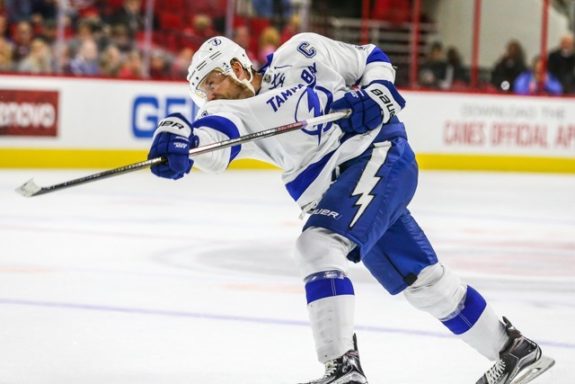
I expect him to be healthy physically, and determined psychologically. I will allow for some bumps and bruises along the way, but I’m setting the over/under at 74.5 games, and taking the over. If he can put a full season together, and the team re-signs RFAs Tyler Johnson and Jonathan Drouin, Tampa Bay as currently constructed can finish first in the division.
Jack Eichel will score 85 points for the Buffalo Sabres.
Eichel missed 21 games this season due to injury, but his 0.93 points per game was good for 11th in the NHL. He also ranked 19th in shots on net despite playing in significantly fewer games than the rest of the top 20. Eichel’s well-documented disenchantment with Buffalo’s last place finish in 2017 is going to fuel a resurgence next year.
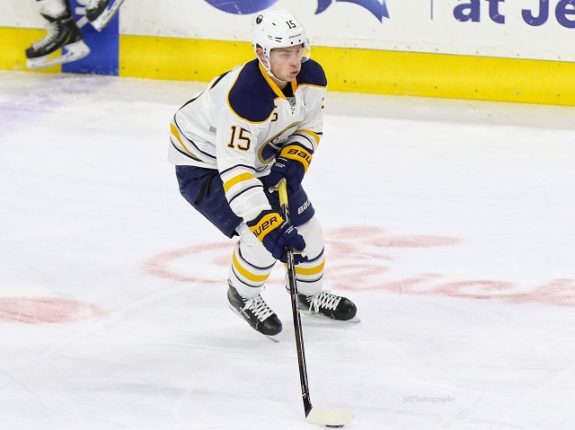
Out of all the league’s cellar-dwellers, the Sabres are in the best position to take a big step forward. With an angry, blossoming superstar in Eichel, Buffalo could compete for a playoff spot next spring.
Dylan Larkin will have his breakout season for the Detroit Red Wings.
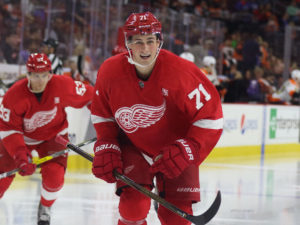
The Red Wings are about to enter uncharted territory, as it will probably be a couple years before they return to the postseason in a stacked Eastern Conference. The good news is they already have someone for captain Henrik Zetterberg to pass the torch to in Larkin. The 2017-18 season is when Larkin is going to have to prove that beyond a shadow of a doubt. The 20-year-old had a forgettable sophomore season in which he amassed just 32 points in 80 games, 13 fewer points than in his rookie year (also 80 games played). He also posted a minus-28 rating, second worst on the team.
The best thing for Detroit to do is put this season behind them and focus on getting back to where they’d gotten so used to being. Larkin needs to be the centerpiece of that. It may take a few years, but a franchise with the pedigree Detroit has isn’t going to wait very long. Larkin will score 30 goals and lead the team in points next season.
The Florida Panthers will finish second in the Atlantic.
In case you haven’t figured it out, I believe the Atlantic Division will be the most wide-open in the NHL. Or at least, that its 2017 playoff teams are susceptible to fall victim to surges from their divisional adversaries next year. The Florida Panthers are a year removed from a first-place finish in the Atlantic, and they have what it takes to return to form in the 2017-18 season.
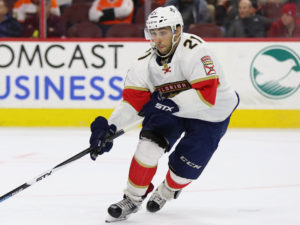
It didn’t help that Florida was without some of its best young players for long stretches this season. Jonathan Huberdeau, Nick Bjugstad, Aleksander Barkov and Aaron Ekblad all saw extended absences, and the Panthers just couldn’t overcome those man-games lost in the end. That said, all four of those players, along with Vincent Trocheck and Reilly Smith, are 25 or younger.
The Panthers’ youth movement is going to put them back on the map, and I firmly believe that both Floridian NHL teams have a chance to compete for the top spot in the division in 2018.
Metropolitan Division
Sebastian Aho will score 70 points for the Carolina Hurricanes.
The postseason may be a few years away for the Hurricanes, but they have a wealth of young talent to be excited about. Among their top five scorers this season, four were 24 or younger. Aho, 19, finished second with 49 points. While it’s encouraging to see a 19-year-old finish near the top of a team in scoring, the fact that it only took 49 points means there is work to do by everyone.
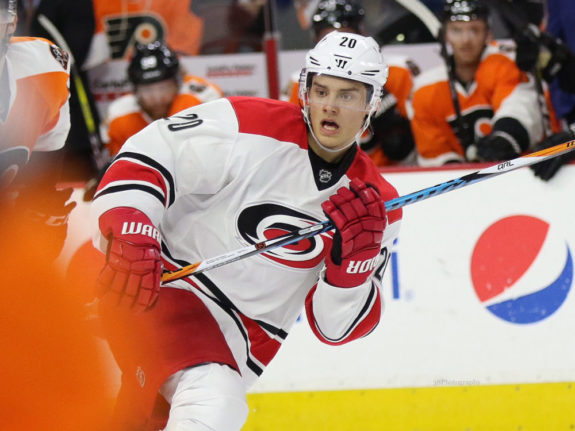
Jeff Skinner was the only player to total more than 50 points, and that’s just not going to get it done in the long term. Improvements must be made, and that means players like Elias Lindholm, Victor Rask and Noah Hanifin need to take the next step. I believe they all will, but Aho is going to lead the charge. He can build on a solid 24-goal, 25-assist season, and there’s no reason he can’t net 30 or more goals next year, joining Skinner as the Hurricanes’ most lethal scorer.
For what it’s worth, I would also like to see Carolina bring back RFA Teuvo Teravainen. The young Finn is only 22, and fits well into the young core the Hurricanes have in place. There’s a long road ahead for Carolina, but they have the pieces to be competitive in two or three years.
Three Philadelphia Flyers defensive prospects will make their long-awaited debuts.
Technically, Sam Morin and Robert Hagg have already made their NHL debuts, each cracking the lineup for one game toward the end of Philly’s regular season schedule. But the Flyers have two UFA defensemen (Michael Del Zotto and Nick Schultz, neither of whom could be justifiably re-signed), and this fall we should see Morin and Hagg get a chance to earn full-time roles.
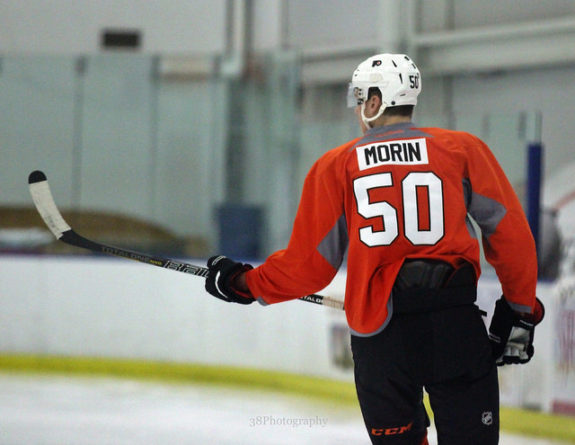
Assuming they bring back RFA Shayne Gostisbehere, the Flyers will have a youth-infused blue line led by Ivan Provorov. None of these five players will even be 25 by the time the puck drops on the 2017-18 season. If they pan out on the ice as well as they are projected to, this defensive corps could give the rest of the Metropolitan Division nightmares for years to come.
The New York Islanders will win 48 games.
The Islanders appeared poised to take the next step in 2016-17 after winning their first playoff series in decades last spring, but the wheels came off early for this team, and they could never catch up to their division rivals. Still, they showed promise once Doug Weight replaced Jack Capuano behind the bench in January, accumulating 52 points over the course of Weight’s tenure. With a 24-12-4 record, the Islanders won 60% of their games under Weight, and snagged at least a point in 70%. Those are promising numbers to use as a launchpad for 2017-18.
At 26, Islanders captain John Tavares is entering the, “if not now, when?” portion of his career. A few short-lived playoff appearances are not how he wants to be remembered, and he’s going to be among the most motivated players in the NHL next season.

More importantly than where he’s at age-wise, at least from the Islanders’ perspective, is that he’s also entering the final year of his contract. Now may be the time for the Islanders’ front office to make a big splash in free agency or the trade market. Unlike some of the other non-playoff teams in the East, the Isles have proven they belong in the conversation with some of the conference’s better squads. Landing a first-line winger or true number-one goaltender this summer would go a long way towards keeping Tavares around, and keeping the Islanders in win-now mode.
The New Jersey Devils will trade Hall for a…haul.
I intentionally saved the Devils for last, because they are the most difficult team in the East for me to put a positive spin on. I thought if I waited, some miraculous development might present itself. But when you win 28 games in a conference that isn’t going to get any easier next year, with about as underwhelming a roster as there is in the NHL, it’s plain to see that it may be awhile before there is light at the end of the tunnel.
What the Devils do have is a 25-year-old star winger who has never played a postseason game, and certainly does not want to spend the remainder of his prime in last place. Taylor Hall is under contract through the 2019-20 season, and although his $6 million salary is a bit intimidating considering he has played 82 games just once in his career, he’s a risk worth taking for a team trying to win a Stanley Cup in the next two to three years.
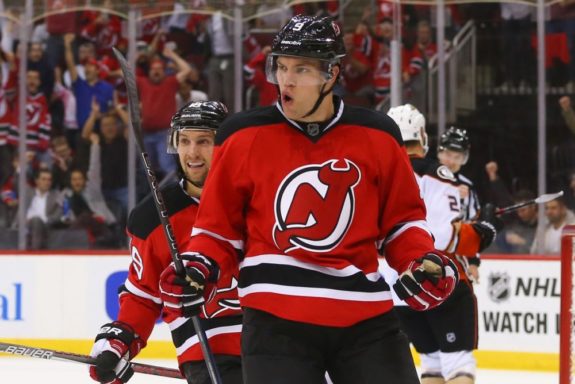
Hall isn’t going to lead you to the promised land all by himself, but on a team with most of the right pieces already in place, he could serve as the final link in the chain. In any case, there’s no reason the Devils should continue paying him $6 million a year when they are several seasons away from being a contender. He should be moved this summer, but most definitely at the 2018 trade deadline. If so, the Devils can parlay a high 2017 draft pick and the return they’d get for Hall into a solid foundation for the future.
Then, when the teams currently dominating the East have faded from prominence, the Devils can be among those in line to take over.
I will release my Western Conference edition in the coming days, but until then, I hope fans of the teams discussed in this one are a bit more hopeful about next season.